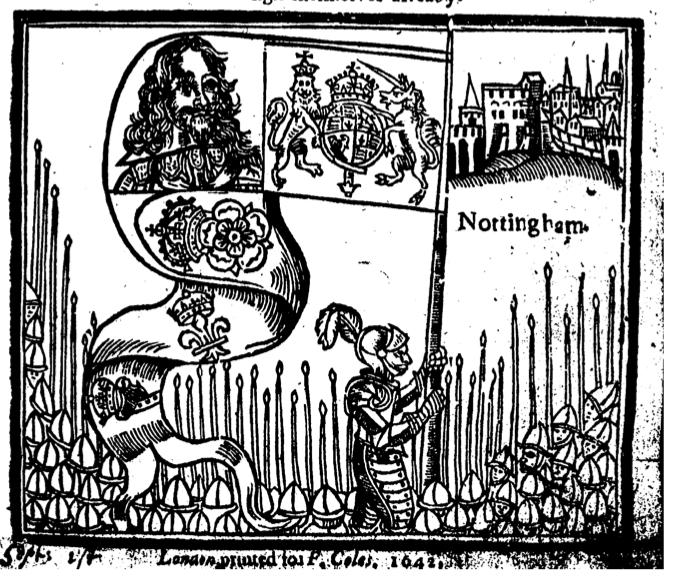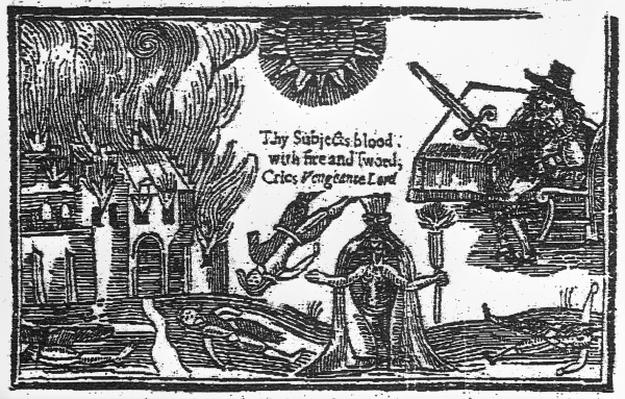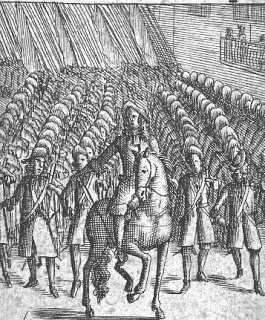Civil War
Topic 7: Civil War
Charles I attempted to raise an army from the county trained bands for his war in Scotland, which ended in humiliation for the King.
The political confrontation between parliament and court reached crisis point and in 1642 the country descended into civil war.
Contemporary woodcut of Charles I raising his banner at Nottigham, signalling the beginning of the Civil War. (From “A true and exact Relation of the manner of his Majesties setting up of His Standard at Nottingham on Munday the 22. of August 1642”)
For the bulk of the English Civil War, Lincolnshire formed a military frontier between the Parliamentarian Eastern Association counties and the Royalist forces in the north and midlands. As a result of this several campaigns were mounted back and forth, and numerous small battles and sieges took place.
Contemporary woodcut showing the level of violence and destruction wrought by the Civil War.
Among the battles were such places as Grantham, Gainsborough, Bolingbroke, Winceby, Lincoln, Ancaster, Crowland, and Burton Stather.
Records indicate that fortifications were built at Boston, Gainsborough, Lincoln, Grimsthorpe Castle, Brigg and Burton Stather. Although to date, the only evidence of these has been found at Brigg in the form of a defensive ditch. It is also possible that the advancing armies of Parliament and King Charles had other effects on the landscape, both temporary and more permanent.
In the wake of the Civil War, the reprisals taken against those who had supported the King, and even some who hadn’t, resulted in damage to several buildings in Lincolnshire, including Bolingbroke and Tattershall castles. It also provides a quantity of documentary evidence about the economic state of various Lincolnshire towns and estates such as Gainsborough.
The second and third Civil Wars did not significantly touch Lincolnshire, with proposed royalist plots failing to happen.
In 1660, there were four regiments of foot in Lincolnshire and eleven troops of horse, which would have placed a considerable strain on the local economy. By the end of the 17th century this had been reduced to two militia regiments and four troops of horse.
Contemporary engraving of late 17th century troops on the march. (from a c.1685 pack of cards held by The British Museum)



